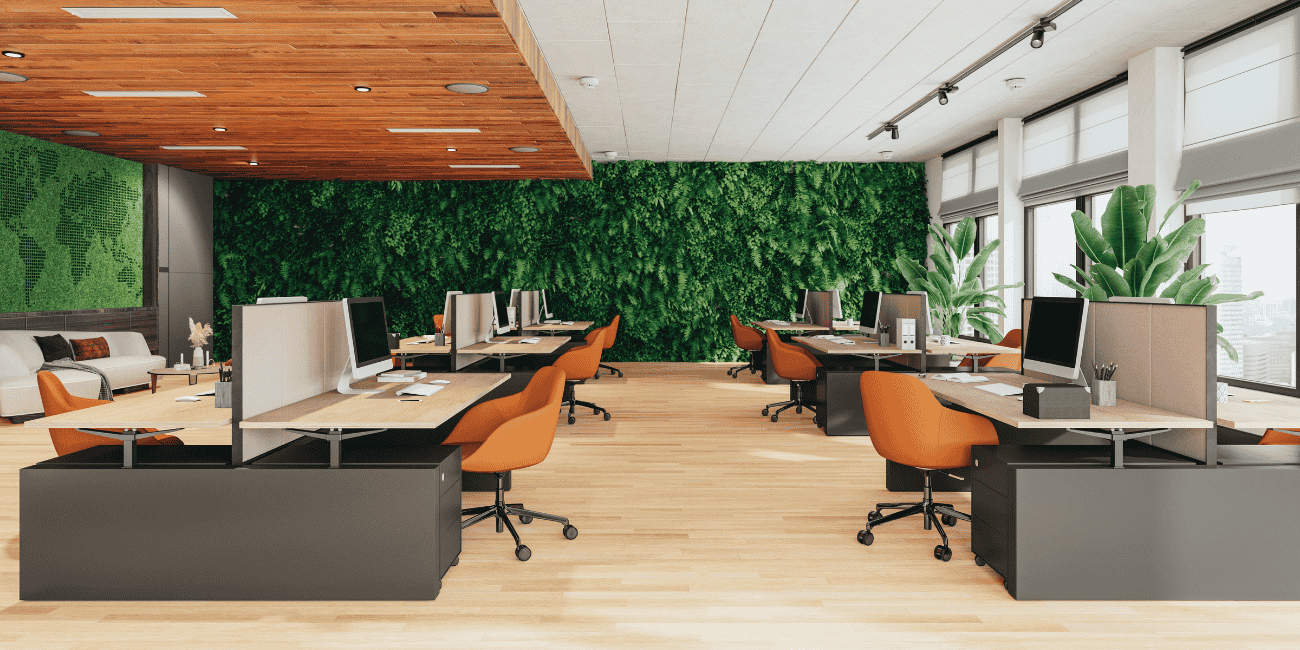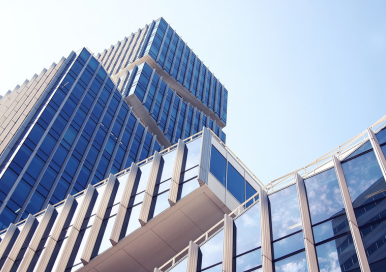How Office Space Efficiency Reduces Costs and Waste

64% of global office space is underutilized, leaving businesses paying for empty desks and wasted energy.
Is your office space working for you, or is inefficiency costing you?
As organizations face rising operational costs and increasing sustainability demands, optimizing office space has become a critical business strategy. Office space efficiency isn’t just about reducing square footage—it’s about smarter office space utilization, energy-conscious design, and implementing sustainable solutions that enhance both financial and environmental performance.
In this blog, we’ll explore how office space efficiency experts approach sustainability and cost savings, and how businesses can integrate these practices into their real estate strategies.
The Cost of Inefficient Office Space
Many businesses overpay for office space they don’t fully utilize. The shift to hybrid work has left many companies with underutilized office footprints, increasing overhead costs and energy waste.
Key inefficiencies in office buildings include:
- Low occupancy rates – Businesses leasing more space than needed.
- High energy consumption – Lighting, HVAC, and equipment running in unoccupied areas.
- Poor office space utilization – Ineffective layout and space distribution.
- Lack of sustainability planning – Failure to integrate green building practices.
By rethinking office space optimization, companies can reduce operating expenses, improve employee productivity, and align with sustainability goals.
Optimizing Office Space for Energy Efficiency
Energy use is one of the biggest expenses for commercial buildings. With the right approach, businesses can enhance office building energy efficiency while lowering their carbon footprint.
1. Smart Energy Management
Advanced energy monitoring systems track real-time usage and identify inefficiencies. Businesses that integrate automated lighting, HVAC controls, and energy-efficient office equipment see significant savings.
2. Space Planning for Efficiency
An effective layout ensures that every square foot of office space is functional. By analyzing usage patterns, companies can reconfigure workspaces to enhance collaboration, eliminate waste, and increase flexibility.
3. Sustainable Office Design
Green office design principles incorporate natural lighting, recycled materials, and energy-efficient appliances to create an environmentally responsible workspace. LEED-certified offices set a high standard for energy-efficient design.
The Financial and Environmental Impact of Office Space Efficiency
Businesses that optimize office space benefit from both financial and environmental returns.
- Lower Operating Costs – Energy-efficient offices use less power, reducing utility expenses.
- Reduced Carbon Footprint – Sustainable buildings cut greenhouse gas emissions and waste.
- Higher Employee Productivity – Well-designed spaces improve air quality, lighting, and overall workplace satisfaction.
- Increased Property Value – Energy-efficient buildings attract higher leasing rates and resale value.
How Office Space Efficiency Experts Help Businesses Adapt
We work with clients to evaluate office space utilization, identify energy-saving opportunities, and implement cost-effective solutions. Our approach includes:
- Conducting office space audits to measure efficiency and energy consumption.
- Developing customized office space optimization strategies based on company needs.
- Partnering with clean energy providers to integrate renewable energy solutions.
- Advising businesses on green certifications and incentives for sustainable office improvements.
The Future of Office Space Efficiency
With increasing pressure to meet sustainability goals, businesses must rethink how they manage office space. Future-ready companies are:
- Adopting flexible workspace models to reduce underutilized square footage.
- Incorporating renewable energy sources like solar and wind to power office buildings.
- Utilizing AI-driven space planning tools to maximize efficiency.
- Exploring climate-controlled storage solutions to preserve equipment, materials, and sensitive data more sustainably.
By prioritizing sustainability and energy efficiency, companies can future-proof their office spaces while cutting costs and reducing waste.
Final Thoughts: A Smarter, Greener Approach to Office Space
Real estate is one of the largest expenses for businesses, yet many companies fail to fully optimize their office spaces. Office space efficiency is not just about cost-cutting—it’s about creating smarter, more sustainable workplaces that drive long-term value.
If your company is looking to reduce office waste, enhance efficiency, and integrate clean energy solutions, now is the time to take action. Let’s build a future where office spaces work better for both businesses and the environment.
Would you like a customized office efficiency strategy? Let’s talk.




